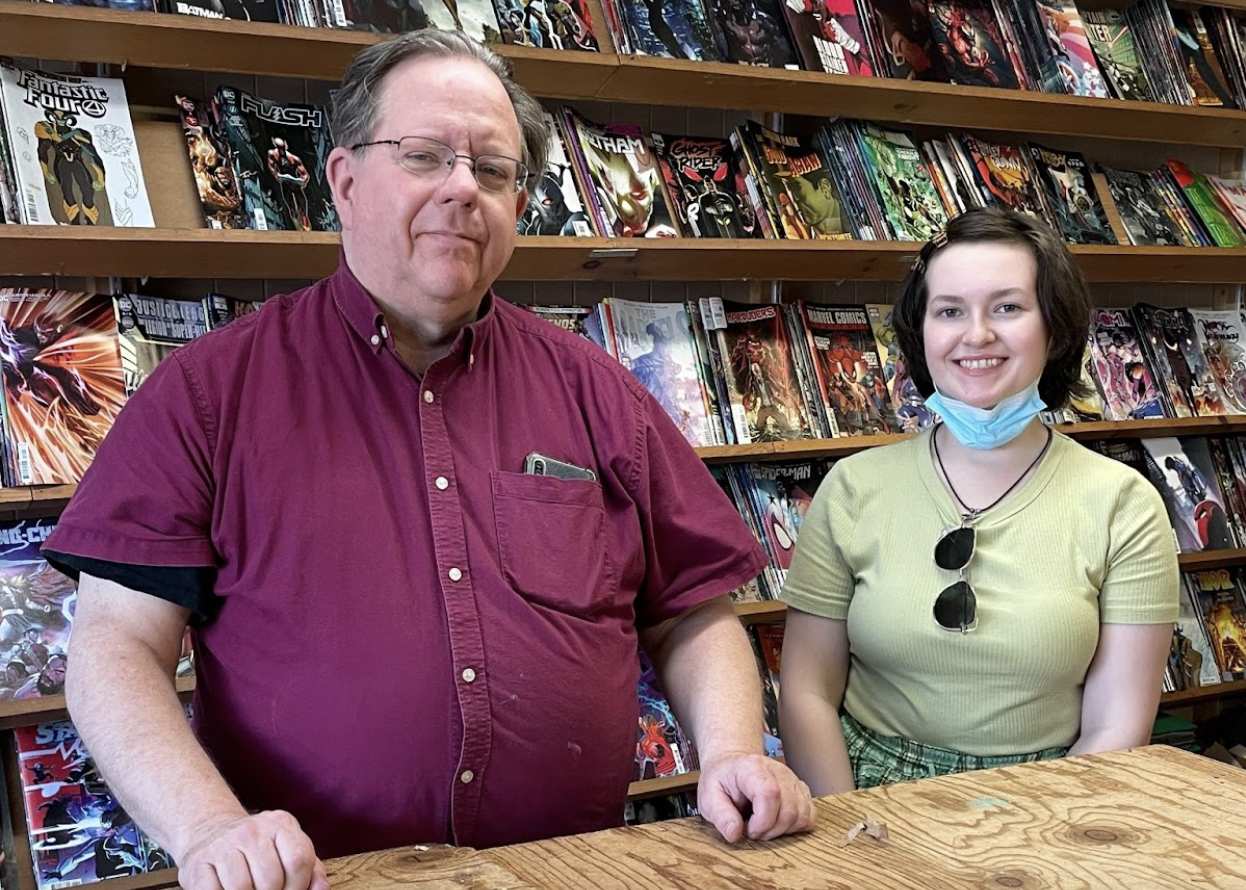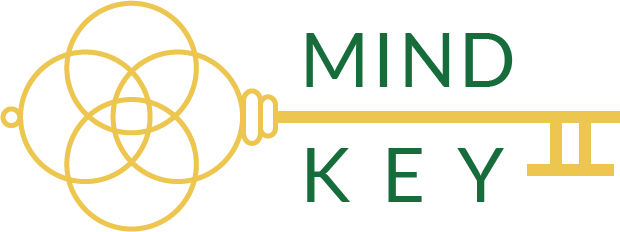
Nourishing the next generation of creators: an interview with Wayne Quakenbush
By Sabrina Rabidoux with Cris McCullough
Nourishing and inspiring the creators of tomorrow
Our student intern this year has been Sabrina Rabidoux, assisting Mind Key with our social media outreach. Sabrina is a student at The Metropolitan Regional Career and Technical Center (The MET), an innovative high school whose mission is to help students discover their interests and passions and support their journey to achieving their goals through mentoring and internships. Sabrina is also a talented graphic artist in her own right, and a prime example that shows how comic books are educational. I thought she might enjoy meeting one of Newport’s long standing icons in the art scene, Wayne Quakenbush, owner of The Annex Comics on Broadway in Newport, RI. My own kids went to the MET and hung out regularly at The Annex growing up. My daughter is now an illustrator, graphic artist and sells her work at Comic-Cons and my son is now an art teacher. So I have first hand knowledge as to the creative nourishing that originates in this artistic oasis.
Showing that comic books are educational
We had the opportunity to meet Wayne at The Annex one sunny afternoon. The shop windows flanking the door featured the art work of students, professional artists and beginners alike, which Wayne switches out every month. Inside, every inch of space is occupied by shelves of comics and graphic novels of all genres, from classic collectibles to the most current anime. The center bins are temporarily covered in plywood to accommodate gaming, ie. Dungeons and Dragons, Unfathomable, and the like. It certainly was like crossing into another dimension. An evocative space for our interview, indeed.
Sabrina begins by asking, ”When did you begin collecting comics?”
A. It started when I was a child. I was in the hospital for tonsillitis and somebody gave me two comic books when I was recovering from surgery. After that I took my twenty five cents per week allowance and I could buy two comic books or save for two weeks to buy a monster magazine.
Q. What are some other things that you’ve started to get into because of comics?
A. I vividly remember watching Batman every Tuesday and Thursday night when it was new and waiting up for that. But, I always liked the more dark side of things so I was into a vampire soap opera called Dark Shadows. And also, when I was a little bit older I discovered underground comic books which were basically an expression of youth and counterculture, which was very subversive and kind of relished in the outsider nature of comic book storytelling. That in turn tied in with the love of horror movies and all things strange and bizarre.
Q. In what ways have comics inspired your life?
A. They inspired me to learn how to draw, to learn how to write, and I highly recommend both of those activities because if you experience enough of each you’ll learn that the processes are very similar. As an educator and mentor to many students, I stress the arts in education, because if you take the “A” out of “STEAM” you get “STEM”, and basically STEM to me is creating a bunch of automatons or robots because you have to have the soul of an artist to use the other tools.
Q. What school did you attend?
A. I went to Pratt Institute in Brooklyn, New York, where I learned a lot about fine art and art history. I find that the more you learn, the more you realize that everything’s connected and that you can relate comic books back to the paintings that people they found in caves that now date back forty five thousand years (I find the similarity to comics) because of the body language involved in how they’re rendered and the sequential nature of the storytelling it’s all very much part of the human experience).
Q. When did comics originate? And how have they changed over time?
A. Comics got very popular in the nineteen-forties in America and Europe. Originally, the process of drawing a comic was hands-on: the artist takes a big piece of paper, and draws all the figures by hand. Then you probably ink the panel borders with literally a bottle of ink and a pen and then you go in with a brush and a pen and you and you do all of the figures. Somebody else usually does the lettering, by hand. The book then went to a factory where the printer would cut out the shapes of the colors that needed to be printed. Finally each page goes through the press four times. As our technology evolves, so has the process. First off, one of the biggest changes is the demand for, what I would call, polish. They mix in clay with the wood pulp so when you make that into paper, it’s shiny. Consequently, new comic books, the ones that are up on the wall here [in his comic shop] weigh about two times more than comic books used to weigh when it was just made out of regular paper. The other change is that, though some artists may still draw by hand, they’ll scan and then they might ink with a computer or tablet. Consequently one of the good things is there’s a bigger range of styles in comic books because everybody has a chance to show their stuff. Another good thing is where underground artists would have to go with very small publishers and make black and white, ugly comic books with very limited print runs. Now, anybody can make their own comic book and put it up online. A few years ago, for instance, I asked people from all over the country to email me the jpegs of their comic. I had a PDF made on a computer, ran it over to Staples, had them printed and bound and call the collection “The Annex Comics”, that was my personal homage to the artist’s ability to mass market their work.
Q. How has art impacted you with the direction that you’ve gone in?
A. Having a venue like this has allowed me to connect with other creative people. Being a human being you have to socialize. A lot of creative people are also very alone, so I think it’s important to get people together in the same room so they can feed off of each other’s energy. I used to have drawing marathons where people came in and everybody would work on their own stuff. But just being in the same room with somebody who is drawing or painting does something to your brain. It expands your horizon.
Q. What are some other ways that you have inspired other people? I know that the students from the Met have interned here.
A. I do alot with social media. I have a Facebook group called “The Annex Art Society” where I post a monthly creative challenge. I generate word prompts for each day of the month and invite folks to respond with images. So, I’ve kind of changed ‘annex’ into a verb meaning “to take over”. As “annex art” I’m kind of taking a stand against mundanity or normalcy and offering a challenge to Newport (and the world) that there’s different kinds of art other than pretty landscapes.”
Q. So for the last question, is there anything that you’re currently working or going to do?
A. I’m currently working with the Portsmouth Arts Guild where we do monthly shows. Post pandemic I hope to have drawing groups here. I used to teach creative drawing and I also used to host figure drawing classes. Presently I’m on social media proselytizing and sharing my work and other people ‘s work and creating a web of connection.One of my goals is to meet every artist in Rhode Island. I’m very tempted to do zoom interviews because I can interview people all over the world that way. I also host a show on public access called “Matters with Wayne Quakenbush”.



 Wayne Quakenbush and Sabrina Rabidoux at The Annex Photo courtesy of Sabrina Rabidoux
Wayne Quakenbush and Sabrina Rabidoux at The Annex Photo courtesy of Sabrina Rabidoux  Wayne Quakenbush and Sabrina Rabidoux at The Annex Photo courtesy of Sabrina Rabidoux
Wayne Quakenbush and Sabrina Rabidoux at The Annex Photo courtesy of Sabrina Rabidoux